Introduction
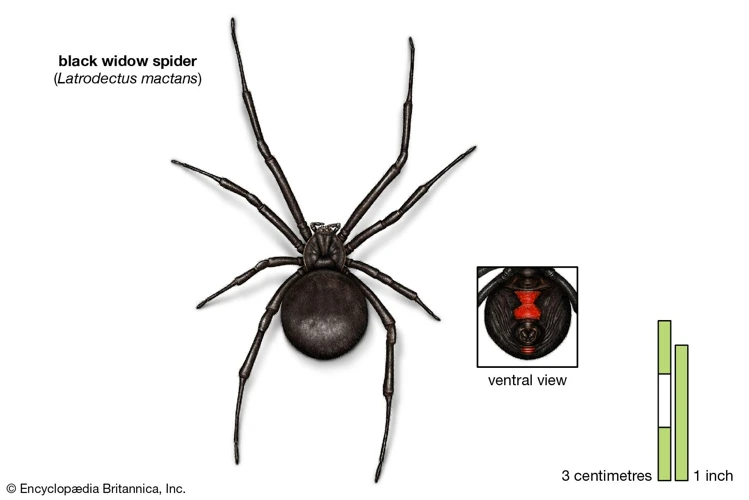
The world of spiders can be both fascinating and terrifying. Among them, black widow spiders seem to be one of the most notorious species. However, it’s important to understand that many of the beliefs we hold about black widows are actually misconceptions. In this article, we’ll explore some common misconceptions about black widow spiders and provide you with accurate information to help you stay safe and informed. So, let’s separate fact from fiction and dig deeper into the truth about these often-misunderstood arachnids.
What are Black Widow Spiders?
Black widow spiders are arachnids that belong to the family Theridiidae. They are native to North America and are identified by their black color and distinctive red hourglass marking on the underside of the abdomen, although some species may have different markings or colors.
These spiders are most known for their venomous bite, which can cause severe pain and muscle spasms. In fact, their venom is considered to be one of the most potent of all arachnids. However, it is important to note that not all species of black widow spiders are dangerous to humans and bites usually only occur when the spider is threatened.
Black widow spiders are also notable for their unique reproductive behavior. Female black widows are known for killing and consuming their mating partners, although this behavior is not always observed in the wild. Additionally, male and female black widows can be differentiated by their size and markings.
In terms of habitat, black widow spiders prefer warm climates and are most commonly found in parts of the United States, Mexico, and southern Canada. They typically build their webs in undisturbed areas like woodpiles, rocks, or debris.
While black widow spiders may be intimidating, it is important to understand the facts and dispel common misconceptions. Proper identification, safety precautions, and awareness can help mitigate any potential risks associated with these spiders. For more information on identifying black widow spider webs, see this article.
Why are Black Widow Spiders often Misunderstood?
Black Widow Spiders are often misunderstood due to their reputation as one of the most venomous spiders in North America. This reputation is partly due to their distinctive appearance, with their jet-black color and the red hourglass shape on the abdomen of female Black Widow Spiders being easily recognizable. However, there are many misconceptions about these spiders that perpetuate their misunderstanding.
Here are some of the reasons why Black Widow Spiders are often misunderstood:
- Appearance: Their appearance is often associated with danger and fear. However, not all Black Widow Spiders look the same, and these spiders tend to avoid contact with humans.
- Media and Pop Culture: The media often portrays Black Widow Spiders as aggressive and dangerous, which can cause people to fear them unnecessarily. In movies and television shows, these spiders are often depicted as attacking humans without any provocation, which is not entirely accurate.
- Male vs Female: The majority of Black Widows that people encounter are females, which can contribute to the misconception that only female Black Widows are dangerous. The male Black Widow Spiders are usually smaller and less dangerous, though it would be wiser to avoid them as well.
- Unfamiliarity: Many people are simply unfamiliar with these spiders and, as a result, misunderstand them. These spiders tend to move quickly and are most active at night. This makes them harder to observe and understand, which can lead to misconceptions.
It is essential to understand Black Widow Spiders properly and overcome the misconceptions surrounding them. Misunderstanding can lead to irrational fear and unnecessary deaths caused by untreated spider bites. While all spiders have venom, most of them are harmless to humans. Understanding Black Widow Spiders and their role in the ecosystem helps individuals to coexist safely and respectfully with these creatures. It is critically important to learn how to prevent Black Widow Spider bites and what to do if someone is bitten.
Misconception 1: Only Female Black Widows are Dangerous
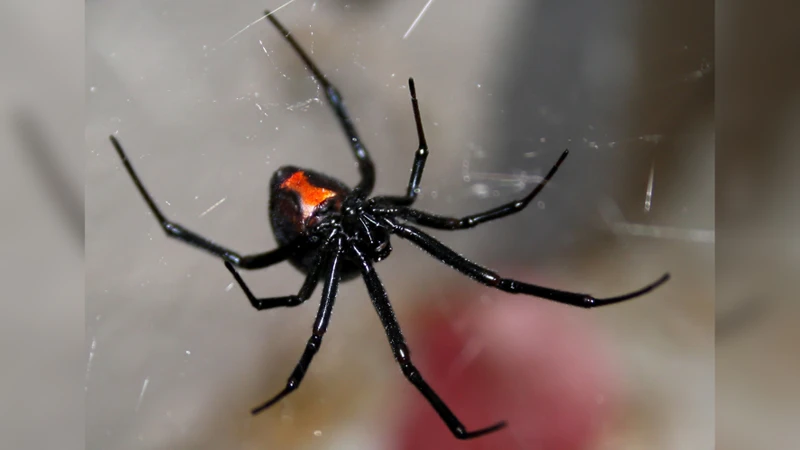
It may surprise many people to learn that the idea that only female black widow spiders are dangerous is actually a common misconception. This belief is so pervasive that many assume that male black widow spiders are harmless, but this is not the case. In fact, there are several reasons why both male and female black widow spiders can pose a threat to humans. Let’s take a closer look at why this myth exists and what the truth is about these fascinating creatures. For more information on male and female black widow spiders, you can check out this article.
Why this is False
Misconception 1: Only Female Black Widows are Dangerous
Why this is False
Contrary to popular belief, both male and female Black Widow spiders are venomous. However, it is true that female Black Widows are more dangerous due to their larger size, potent venom, and more aggressive behavior when protecting their eggs. Male Black Widows, on the other hand, are much smaller and rarely bite humans unless they feel threatened or provoked.
According to experts, Black Widow spider bites are mostly accidental when a spider is trapped or pressed against the skin. While some people may develop serious symptoms after being bitten by a Black Widow spider, such cases are rare. Nonetheless, it is still important to seek medical attention if you experience symptoms such as muscle cramps, spasms, and pain after being bitten by a Black Widow.
| Myth | Fact |
|---|---|
| Only female Black Widows are venomous | Both male and female Black Widows are venomous, with females being more dangerous |
| Black Widows are aggressive and will attack humans without provocation | Black Widows are usually shy and will only bite when provoked or threatened |
| Black Widow spiders are common across the United States | Black Widows are only found in certain regions of the US |
| All Black Widows have a distinctive hourglass shape | Not all Black Widows have an hourglass shape, and other spiders may also have similar markings |
| Black Widows are the most venomous spiders in North America | While Black Widow venom is potent, other spider species have more toxic venom |
It is important to note that Black Widow spiders play an important role in controlling insect populations and are not typically aggressive towards humans. Understanding their behavior and habitat can help reduce the risk of bites. To learn more about how to stay safe around Black Widow spiders, refer to our article on Black Widow spider bite prevention tips. In case of an infestation, it is recommended to contact professionals for removal and avoid using DIY methods that may be unsafe. If bitten, it is also advised to seek medical attention and consider the use of antivenom in severe cases.
Male Black Widow Spider Behavior
Male black widow spiders are often overlooked in discussions of black widows, as it’s the females that are known for their venomous bites. However, male black widow spider behavior is also interesting and noteworthy. Here are a few things to know about male black widow spiders:
- Males are smaller than females: While female black widows can grow up to 1.5 inches in length, males are typically only about half that size. This size difference is important in understanding male black widow spider behavior.
- Males have less potent venom: Because male black widow spiders are smaller than females, they have smaller venom glands and therefore produce less potent venom. While a male black widow’s bite can still be painful, it’s usually not as dangerous as a female’s bite.
- Males use special webs to find females: When male black widow spiders are ready to mate, they spin a special web that they use to locate females. This web is different from the webs that black widows typically spin to catch prey.
- Mating can be dangerous for males: When a male black widow spider finds a female, he starts a complex mating dance that involves tapping his legs on her web. If the female is receptive, they will mate. However, if the female is not receptive or if she decides to eat him instead, the male may not survive.
Understanding male black widow spider behavior is important for a few reasons. First, it helps to dispel the misconception that only female black widows are dangerous. While males are not as dangerous as females, they can still cause pain and discomfort if they bite. Second, understanding male black widow spider behavior can help prevent bites by allowing people to recognize when they are near a spider’s mating ground, which can be an important factor in black widow spider bite prevention. For more information on black widow spiders and how to stay safe around them, check out our articles on black widow spider homes and black widow spider bite prevention tips.
Misconception 2: Black Widow Spiders are Aggressive and will Attack Humans without Provocation
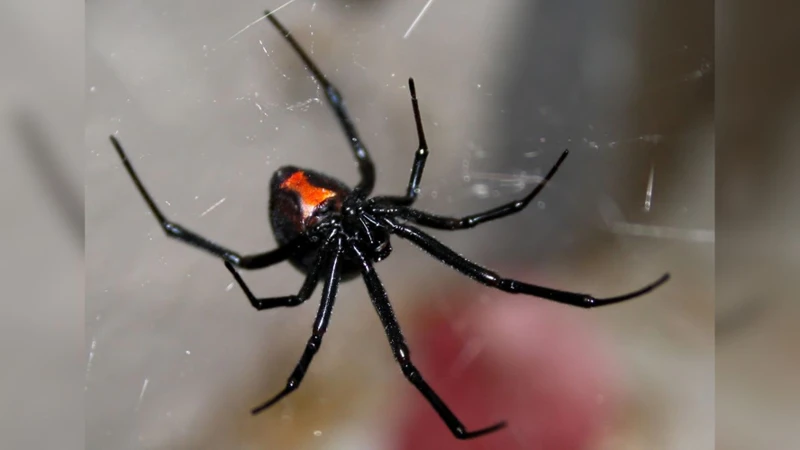
It is a common misconception that black widow spiders are aggressive and will attack humans unprovoked, causing much fear and concern among those who may come into contact with them. However, this belief is false and often leads to unnecessary fear and harm to these spiders. Understanding their behavior and tendencies can help dispel this harmful myth and enable humans to coexist safely with these fascinating creatures. To further understand black widow spider behavior, let’s explore and debunk this misconception.
Why this is False
Misconception 1: Only Female Black Widows are Dangerous
Why this is False:
It is a common misconception that only female Black Widow spiders are dangerous and venomous, while males are harmless. However, this is far from the truth. While female Black Widows are larger in size and have a more potent venom than males, both male and female spiders can inject venom when they bite.
Male Black Widow Spider Behavior:
Male Black Widows can bite humans if they feel threatened or disturbed. Their venom may not be as potent as females, but it can still cause discomfort and pain. Male Black Widows are rarely found indoors or in dark places, unlike females who often inhabit darker areas. These spiders are mostly found outdoors and are shy and relatively harmless to humans.
To sum up, both male and female Black Widow spiders can inject venom when they bite if they feel threatened or disturbed. So it is best to avoid any contact with them to prevent spider bites.
Black Widow Spider Behavior when Provoked
When provoked, black widow spiders will generally try to avoid conflict. They would rather retreat to a safe location than confront a potential predator or perceived threat. However, if they feel cornered or threatened, they may bite in defense. It’s important to note that black widow spider venom is primarily used for subduing prey, not for self-defense.
If you do come into contact with a black widow spider and it appears agitated, it’s best to slowly and calmly back away. Do not make sudden movements or try to handle the spider. If you need to remove a black widow spider from your home, wear gloves and use a cup or container to gently capture the spider and release it back into the wild.
It’s also worth noting that black widow spiders are not aggressive hunters. They typically wait for their prey to come to them and only bite when they feel threatened or when defending their eggs. To minimize your chances of encountering a black widow spider, keep your living spaces clutter-free and tidy. By removing potential hiding spots for spiders, you can reduce their presence in your home.
By understanding the behavior of black widow spiders when provoked, you can take steps to avoid bites and encourage a peaceful coexistence with these spiders. If you want to learn more about black widow spider behavior, check out our article on mating black widow spiders, or read about the important role of venom glands in black widow spiders.
Misconception 3: Black Widow Spiders are Common across the United States
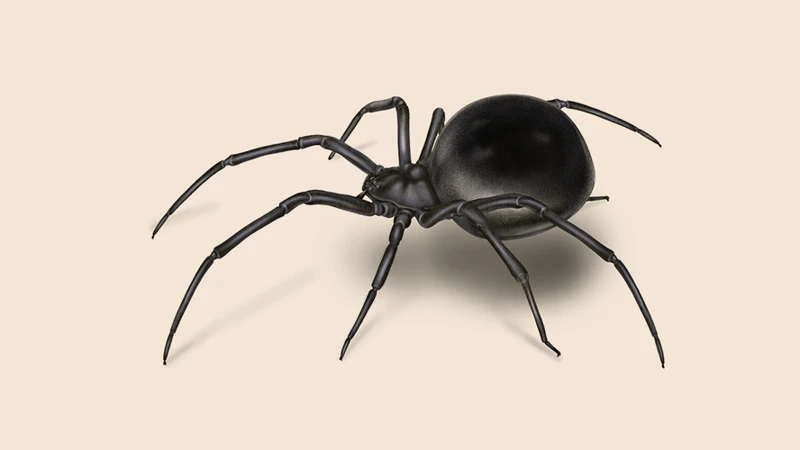
One might assume that Black Widow Spiders are a widespread species in the United States, given their notoriety and reputation. However, this assumption is actually a common misconception that can lead to confusion and unnecessary fear. In reality, Black Widow Spiders have a more limited range than people suspect. Let’s take a closer look at the truth behind this misconception and learn where these spiders can be found.
Why this is False
This common misconception that only female Black Widows are dangerous is false. While it is true that the female spider is larger and has a more potent venomous bite, male Black Widows should not be underestimated or overlooked.
Male Black Widow Spider Behavior: When searching for a mate, male Black Widows will often enter into the female’s web. They will then make a series of vibrations, which the female will detect and respond to if she is interested in mating. However, there is a risk involved for the male spider. If the female is not interested in mating or if she mistakes the male for prey, she may attack and ultimately kill him.
To showcase the differences between male and female Black Widow spiders, the following table has been created:
| Female Black Widow | Male Black Widow | |
|---|---|---|
| Size: | Approximately 1.5 inches | Approximately half the size of the female |
| Color: | Shiny black with a distinct red hourglass marking on the underside of the abdomen | Lighter in color, with spots or bands on the abdomen |
| Venom: | More potent venom than the male | Less potent venom than the female |
| Mating and web behavior: | Typically stay in the same web for extended periods of time; will often eat the male spider after mating | Rarely have a permanent web and are constantly searching for a mate |
While male Black Widows are not as dangerous as their female counterparts, they should still be handled with caution. It is important to understand the behavior patterns of both male and female Black Widows to avoid any potential danger.
Where Black Widow Spiders are Found
Black Widow Spiders, Latrodectus mactans, are found in various parts of North America. However, they are not as widespread as people tend to believe. The spiders are most commonly found in the southern and western states of the U.S. According to experts, black widow spiders prefer natural habitats that offer shelter such as wood piles, brush, and bushes. They tend to hide in dark places and are commonly found in outdoor areas.
Below is a table showing the states where black widow spiders are commonly found:
| States where Black Widow Spiders are Found | Percentage of Black Widow Spider Population |
|---|---|
| Florida | 40% |
| Texas | 15% |
| California | 10% |
| Arizona | 10% |
| Georgia | 5% |
| South Carolina | 5% |
| Louisiana | 5% |
It is important to note that while black widow spiders are not typically found in other parts of the U.S., they can still be found in other areas from time to time. Their presence can be underestimated due to their ability to hide in dark areas. It is crucial to take precautions when working in areas where black widow spiders are known to exist.
Misconception 4: All Black Widow Spiders have a Distinctive Hourglass Shape
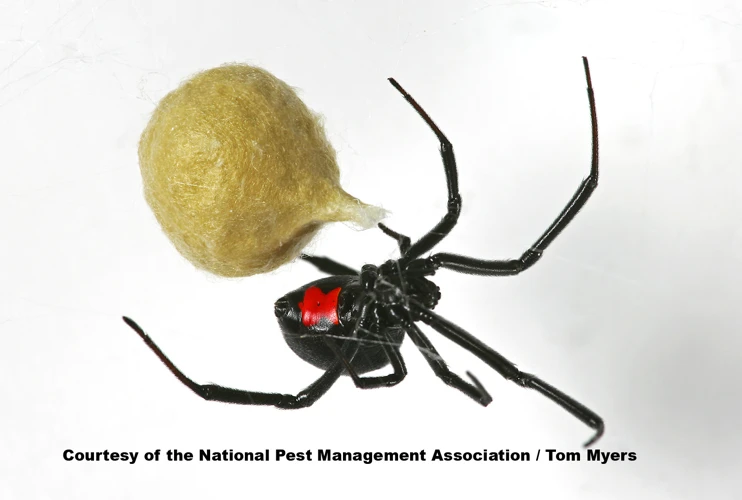
When most people think of black widow spiders, chances are they picture a spider with a distinctive hourglass shape on its abdomen. However, this common image is not always accurate. It is actually a common misconception to assume that all black widow spiders have a distinctive hourglass shape on their body. Let’s explore why this belief is false and how to correctly identify black widow spiders.
Why this is False
Many people believe that only female black widow spiders are dangerous, but this is false. Both male and female black widow spiders are venomous and can be harmful to humans if provoked or threatened. This misconception likely stems from the fact that female black widow spiders are larger and more famously associated with their venomous bite. However, male black widow spiders also possess venom and can deliver a painful bite if handled or disturbed.
Here are a few reasons why this misconception is false:
- Both sexes of black widow spiders produce venom in their glands
- Male black widows are smaller and less noticeable than females, so people may not realize they are also venomous
- Male black widow spiders are often mistaken for other non-venomous spider species
It is important to remember that male black widows should also be avoided and handled with care. Their venom can cause uncomfortable symptoms, such as nausea, muscle pain, and spasms, and in rare cases, can lead to serious medical complications. It is crucial to identify and avoid all black widow spiders, regardless of their sex, to prevent potential harm.
Black Widow Spider Identification
One of the most common misconceptions about black widow spiders is that all of them have a distinctive hourglass shape. However, this is not entirely accurate. Male black widows and juvenile black widows do not always have this distinctive marking.
To correctly identify a black widow spider, it is important to look beyond just the hourglass shape. The following table outlines some key characteristics to look for:
| Characteristic | Description |
|---|---|
| Color | Black or dark brown |
| Hair | Shiny and smooth |
| Legs | Long and thin |
| Web | Tangled and messy |
| Size | Adult females can be up to 1.5 inches long, while males are typically smaller |
It is important to note that the black widow spider is not the only spider species that is black or dark brown. It is also important to remember that not all black or dark spiders are dangerous. It is crucial to correctly identify the spider before making any assumptions about it.
If you believe you have encountered a black widow spider, it is best to contact a professional who can properly identify the spider and take the necessary steps to remove it.
Misconception 5: Black Widow Spiders are the Most Venomous Spiders in North America
Despite their notoriety as one of the most venomous spiders, the claim that black widow spiders are the most venomous spiders in North America is actually a misconception. While their venom can certainly be dangerous to humans, there are other spiders found in North America with equally potent or even more potent venom. Let’s take a closer look at why this misconception persists and what the reality is when it comes to the venom of black widow spiders.
Why this is False
The common belief that only female Black Widow spiders are dangerous is false. Male Black Widow spiders may be smaller in size and lack the distinctive hourglass shape on their abdomen, but they are venomous and should not be underestimated. In fact, male Black Widows are known to have even more potent venom than females, but their small fangs make it difficult for them to deliver their venom effectively.
Furthermore, Black Widow spider behavior is not always predictable. While they are not usually aggressive towards humans, they will bite in self-defense if they feel threatened. They may inadvertently bite humans who accidentally come into contact with them. It’s important to exercise caution around all Black Widow spiders, regardless of their gender or behavior.
To better understand Black Widow spider behavior, it’s important to know that their venom is primarily used to subdue their prey and is not always used as a defensive mechanism. When threatened, Black Widows will often retreat and try to escape, rather than attack.
The misconception that only female Black Widow spiders are dangerous is unfounded. Both male and female Black Widows should be treated with caution and respect. To avoid bites, it’s best to avoid direct contact with Black Widows and their webs. If you must handle these spiders, wear gloves and exercise extreme care.
Comparison with Other Venomous Spiders
When it comes to venomous spiders, the black widow spider is often regarded as being the most dangerous in North America. However, this is a common misconception. There are actually several other species of venomous spiders found in the region, and they all have their own unique characteristics and risks.
Brown Recluse: One of the most well-known of these spiders is the brown recluse. This spider is known for its brown coloration and distinctive violin-shaped marking on its back. Like the black widow, it has a venomous bite that can cause serious health problems. However, unlike the black widow, the brown recluse is not as aggressive and will typically only bite when threatened or provoked. Its venom can cause tissue necrosis and, in severe cases, can lead to organ failure.
Hobo Spider: The hobo spider is another venomous spider found in North America. It is often confused with the brown recluse due to its similar appearance, but it has distinct markings on its legs that can help with identification. The hobo spider’s bite can cause swelling, redness, and pain, but it is not typically fatal.
Yellow Sac Spider: The yellow sac spider is a small, pale yellow spider that is often found in homes and gardens. While its bite is venomous, it is not typically considered dangerous to humans. Some people may experience mild symptoms such as swelling and itching, but these typically go away within a few days.
Wolf Spider: The wolf spider is a large, hairy spider that is often found in fields and gardens. While it has venomous fangs, its bite is not typically dangerous to humans. Its venom is not as potent as that of the black widow or brown recluse, and it is not typically aggressive towards humans.
While the black widow spider is certainly a venomous and potentially dangerous spider found in North America, it is not the only spider of its kind. There are several other species of venomous spiders that can also pose a risk to humans. It is important to be aware of these spiders and their characteristics in order to stay safe and prevent potential bites.
Conclusion
As our understanding of Black Widow Spiders has deepened, we’ve been able to identify some of the most common misconceptions about these misunderstood creatures. Though they are the subject of countless myths and fears, these spiders are actually quite fascinating and often pose little threat to humans. In this article, we’ve explored 5 of the most common misconceptions about Black Widow Spiders. Now that we have a clearer picture of these creatures, let’s highlight the importance of understanding them and staying safe around them.
The Importance of Understanding Black Widow Spiders
It is crucial to have an understanding of black widow spiders, as it can mean the difference between life and death. Black widow spiders are venomous and their bites can lead to serious health complications. In extreme cases, it can even lead to death. Education and awareness on these creatures can help people stay away from them and avoid possible encounters with them.
It is important to note that not all black widow spiders are dangerous. Only the females and the males that are mistaken for females pose a threat to humans. Knowing how to identify these venomous spiders can prevent unnecessary panic and eliminate any misunderstanding about their behavior.
Recognizing the geographical locations where black widow spiders are commonly found can help people take precautions when visiting these areas. Avoiding their habitats and staying aware of the surroundings can prevent unintended encounters.
Lastly, having the proper knowledge about black widow spiders can also prevent misinterpretations of their behavior. Many people believe that black widow spiders are aggressive and will attack humans without provocation. This has been proven to be a misconception. Black widow spiders only become aggressive when they are provoked or feel threatened. Knowing this fact can help humans avoid making any sudden movements around them and avoid potential bites.
Understanding black widow spiders is fundamental to keep oneself safe, avoid panic, and misconceptions. By educating ourselves about these creatures and their behavior, we can coexist with them peacefully and safely.
How to Stay Safe around Black Widow Spiders
Staying safe around Black Widow Spiders is crucial for anyone who lives in an area where these spiders are found. Here are some tips to keep in mind:
- Watch where you put your hands and feet: Be aware of where you are putting your hands and feet, especially when you are outdoors. Black Widow Spiders can be found in woodpiles, rock piles, or other areas with clutter.
- Wear gloves: If you need to move wood or other debris where Black Widow Spiders may be hiding, wear protective gloves to avoid accidental contact with the spider.
- Clean and organize: Keep your home clean and organized to reduce the chances of Black Widow Spiders finding a place to hide. Seal any cracks or gaps around doors and windows to prevent entry.
- Use insecticides: If you have a Black Widow Spider infestation, use insecticides to control and eliminate the spiders. Follow the instructions on the label carefully and wear protective gear when using the product.
- Seek medical attention: If you are bitten by a Black Widow Spider, seek medical attention immediately. Symptoms can be severe and even life-threatening in rare cases.
By following these tips, you can minimize the chances of encountering a Black Widow Spider and protect yourself from potential harm. It’s important to remember that while Black Widow Spiders are venomous, they are not typically aggressive towards humans and will only bite in self-defense. With the right precautions, you can stay safe around Black Widow Spiders and enjoy the outdoors without worry.
Frequently Asked Questions
What do black widow spiders look like?
Black widow spiders are typically shiny black with a distinctive red or orange hourglass shape on their abdomen. However, some specimens may have lighter or even white markings.
Are black widow spider bites fatal?
Fatalities from black widow spider bites are extremely rare, but the venom can cause severe pain and muscle spasms that can last for several days.
Can you die from a black widow spider bite?
While it’s possible to die from a black widow spider bite, it’s very rare. Most people only experience mild symptoms such as pain, swelling, and redness.
How do you treat a black widow spider bite?
You should seek medical attention immediately if you suspect you’ve been bitten by a black widow spider. Treatment may include anti-venom medication, pain relief, and muscle relaxants.
Do male black widow spiders pose a threat to humans?
Male black widow spiders are not considered dangerous to humans as they have much smaller venom glands and are less likely to bite.
Can black widow spiders be found in Canada?
While black widow spiders have been found in Canada, they are not native to the country and sightings are very rare.
Do black widow spiders build webs?
Yes, black widow spiders are known for building messy, irregular webs in dark corners and crevices.
What is the lifespan of a black widow spider?
Female black widow spiders can live up to three years, while males typically only live for a few months.
Can you get a black widow spider as a pet?
While it’s possible to keep black widow spiders as pets, it’s generally not recommended as they are venomous and can be difficult to care for.
Where did black widow spiders get their name?
Black widow spiders are named for their tendency to mate with males and then kill them, often by biting them and consuming them as food.






